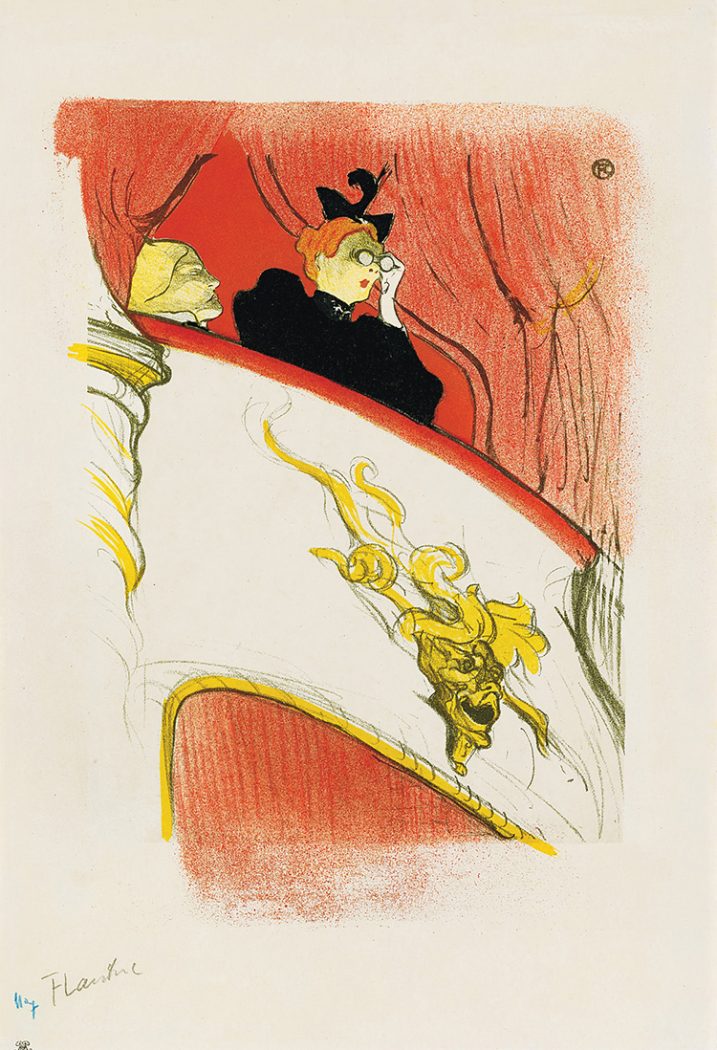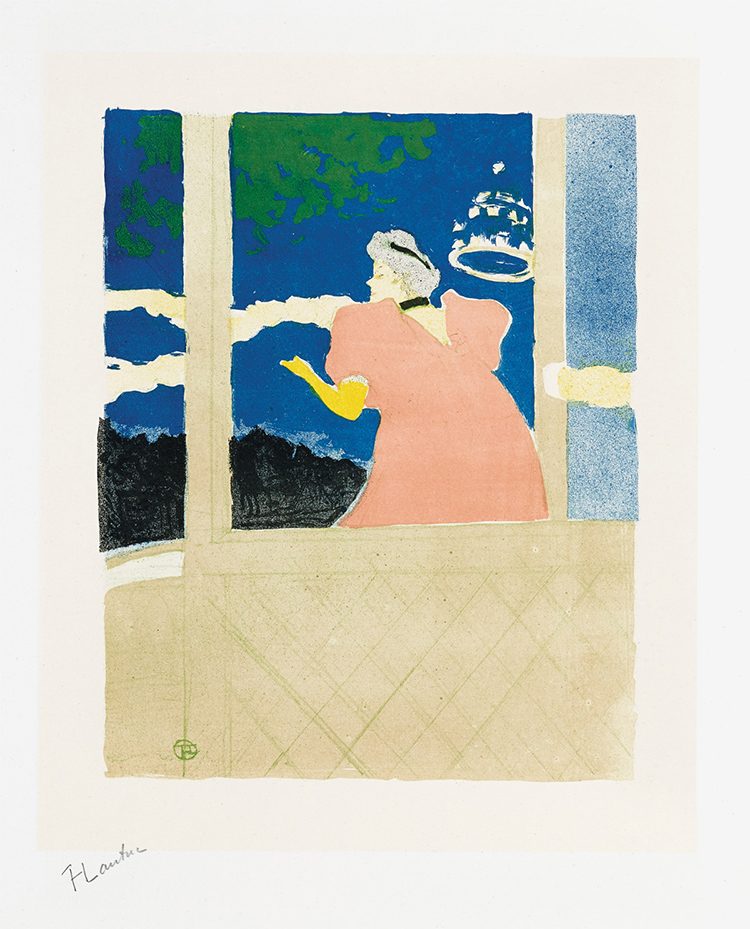Each week for the duration of the exhibition, we’ll focus on one work of art from Toulouse-Lautrec Illustrates the Belle Époque, on view Feb. 4 through April 30, 2017.

Henri de Toulouse-Lautrec, The Box with the Gilded Mask, about 1894. Crayon, brush, and spatter lithograph with scraper, printed in five colors. Key stone printed in olive green, color stones in red or brown-red, yellow, gray-beige, and black-olive green or black on imitation Japan paper. Only state, 14 5⁄8 × 12 7⁄8 in. Private collection
Lautrec drew an admirable program in colors for which collectors will fight someday. —André Antoine
Toulouse-Lautrec’s lasting affiliation with avant-garde theater began in 1893, when he received a commission to design programs for André Antoine’s company, Théâtre Libre. This is the program design for Le Missionnaire by Marcel Luguet, printed without text, a format intended for collectors. Rather than depict a scene from the play, Toulouse-Lautrec focused on the theater box, a private space for the affluent in which to withdraw into the shadows or let themselves be seen. It shows Jane Avril, engaged in the performance, with artist Charles Condor. Like Edgar Degas’s pastel La Loge, this print is seen from a low vantage point. Two preparatory sketches for the lithograph are known.



